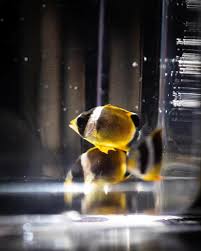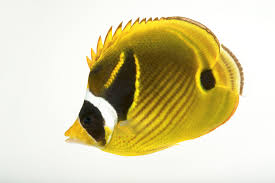
The dragon is one of the most iconic and revered symbols in Chinese culture. Known for its strength, wisdom, and power, the dragon is deeply embedded in Chinese history and traditions. Its influence stretches across various aspects of Chinese life, from art and religion to literature and festivals. Among its many representations, the dragon also plays an integral role in folk games and traditional festivals, which have been practiced for centuries and continue to thrive in modern-day China. These games and festivals are not only a way for people to celebrate their cultural heritage but also provide an avenue to honor the dragon’s symbolism in an interactive and joyous manner.
In Chinese folk games and festivals, the dragon often represents prosperity, vitality, good fortune, and the forces of nature. Its presence in these events symbolizes the harmonious relationship between the people, nature, and the divine, and it serves as a reminder of China’s rich cultural traditions. From dragon boat races to lantern festivals, the dragon takes center stage in many important celebrations. This article will explore the role of the dragon in Chinese folk games and traditional festivals, highlighting the various ways in which this powerful symbol is celebrated.
1. The Dragon Boat Festival: Celebrating the Dragon’s Spirit
One of the most famous traditional festivals in China is the Dragon Boat Festival (端午节, Duānwǔ Jié), celebrated on the 5th day of the 5th month of the Chinese lunar calendar. This festival is closely associated with the dragon, particularly in the form of dragon boat races. The event is not only a display of competitive spirit but also a deeply symbolic celebration of ancient Chinese traditions.
The dragon boat races, which are the highlight of the festival, feature teams of paddlers who race in long, narrow boats decorated with dragon heads and tails. The boats are meant to symbolize the dragon, a powerful and mystical creature in Chinese folklore. According to legend, the dragon boat races originated as an effort to rescue the patriotic poet Qu Yuan, who drowned in the Miluo River. People raced to throw food into the river to prevent fish from eating his body, and the dragon boats were said to represent the dragons of the river that came to his aid.
In the context of the festival, the dragon is seen as a symbol of strength, power, and protection. The dragon boat race itself is a way of honoring the dragon’s power and its connection to water, a key element in Chinese culture. The dragon is also believed to control the weather, particularly rainfall, which is crucial for agricultural success. As a result, the Dragon Boat Festival is not just a celebration of Qu Yuan’s life but also an invocation of the dragon’s protective and life-giving powers.
The festival is further enriched by the consumption of zongzi, sticky rice wrapped in bamboo leaves, which is another essential part of the Dragon Boat Festival. This food, along with the races and various rituals, represents a bond between humans and dragons, who are believed to bring both protection and prosperity to the community.
2. The Lantern Festival: Illuminating the Dragon’s Presence
The Lantern Festival (元宵节, Yuánxiāo Jié), which takes place on the 15th day of the lunar New Year, is another major event in China where the dragon is a key figure. Traditionally, the festival marks the end of the Chinese New Year celebrations and is a time for families to come together, enjoy festive foods, and participate in various activities, including lantern displays and dragon dances.
During the Lantern Festival, cities and villages across China are filled with colorful lanterns, many of which are shaped like dragons or feature dragon motifs. These lanterns symbolize the power and energy of the dragon, as well as its ability to illuminate the dark and guide people toward good fortune and happiness. Lanterns are traditionally made of paper, and their bright colors represent the celebration of life, hope, and prosperity.
In some regions, dragon lanterns are paraded through the streets in elaborate displays. These lanterns can be quite large, stretching over many meters, and are carried by performers who manipulate them to create the illusion of a dancing dragon. The movement of the dragon lantern symbolizes the dynamic nature of life and the continuous cycle of renewal, which is central to Chinese culture.
The dragon’s association with the Lantern Festival is also rooted in the belief that the dragon controls the weather, particularly the seasons. The illumination of the dragon lanterns is thought to bring warmth and light, chasing away the cold and darkness of winter and welcoming the arrival of spring. As a result, the Lantern Festival is seen as a time for new beginnings, growth, and the ushering in of prosperity, with the dragon serving as a guiding force.
3. The Dragon Dance: A Symbol of Strength and Good Luck
The Dragon Dance (舞龙, Wǔ Lóng) is one of the most well-known traditional Chinese performances, often seen during major festivals such as Chinese New Year and the Lantern Festival. The dragon dance involves a team of performers who carry a long, flexible dragon figure on poles, making it appear as though the dragon is dancing. This dance is considered a way to bring good luck, drive away evil spirits, and celebrate the power and vitality of the dragon.
The dragon is typically made from brightly colored fabric and is often adorned with glittering scales, a fierce head, and a flowing tail. Performers manipulate the dragon to simulate its movements, making it appear as though it is slithering, twisting, and leaping through the air. The dragon dance is usually accompanied by loud drumming, cymbals, and firecrackers, all of which are intended to create a festive atmosphere and scare away evil spirits.
In Chinese culture, the dragon dance is believed to bring prosperity, wealth, and good fortune to those who witness it. It is particularly popular during the Chinese New Year celebrations, where the dragon is thought to bring in the new year with positive energy and blessings. The dragon dance is also a symbol of strength, vitality, and unity, as it requires coordinated effort and teamwork to bring the dragon to life.
In some regions, the dragon dance is performed as part of a larger procession, with the dragon leading the way through the streets, followed by other performers and revelers. The dance is often accompanied by other traditional performances, such as lion dances, martial arts demonstrations, and folk music, all of which add to the festive and lively atmosphere of the celebration.
4. The Qingming Festival: Honoring the Dragon’s Role in Ancestor Worship
The Qingming Festival (清明节, Qīngmíng Jié), also known as Tomb Sweeping Day, is a traditional Chinese festival that takes place in early April. While the primary focus of the festival is on honoring ancestors, the dragon also plays a symbolic role in the observance of the festival.
During the Qingming Festival, people visit the graves of their ancestors to clean tombstones, offer food, and burn incense. The dragon’s presence in this festival is often symbolized through the use of dragon-shaped incense burners or dragon motifs on the offerings made to the deceased. In Chinese folk beliefs, the dragon is seen as a guardian of the ancestors and a guide to the spirit world. Its presence in the rituals of the Qingming Festival is meant to ensure the safety and well-being of the departed souls and to honor the connections between the living and the dead.
The dragon’s role in ancestor worship is deeply rooted in the belief that it is a powerful intermediary between the human world and the spiritual realm. By invoking the dragon’s presence, people hope to ensure that their ancestors are well-cared for and that they continue to provide guidance and protection from the other side. This reinforces the dragon’s importance in Chinese culture as a symbol of continuity, connection, and respect for the past.
5. Other Folk Games and Festivals Featuring the Dragon
In addition to the well-known festivals discussed above, the dragon also makes appearances in various other folk games and traditional celebrations across China. For example, in some regions, dragon boat races are held as part of local harvest festivals, where the dragon is honored as a symbol of prosperity and protection for the agricultural community. Similarly, in certain parts of China, dragon dances are performed during wedding ceremonies to bless the newlyweds with good fortune and happiness.
Dragon imagery can also be found in many other forms of folk art, such as paper cutting, embroidery, and pottery, all of which feature the dragon as a symbol of good fortune, vitality, and divine power. These artistic representations of the dragon are often used during various festivals and rituals to bring blessings and ensure a prosperous future.
6. Conclusion: The Dragon’s Continuing Legacy in Chinese Folk Games and Festivals
The dragon’s role in Chinese folk games and traditional festivals is a testament to its enduring significance in Chinese culture. From the exciting dragon boat races of the Dragon Boat Festival to the illuminated dragon lanterns of the Lantern Festival, the dragon continues to captivate the hearts and imaginations of people across China. Its presence in these events serves as a reminder of the deep connection between the people, nature, and the divine, as well as the importance of honoring ancient traditions that have shaped Chinese society for thousands of years.
As China moves forward into the modern era, the dragon remains a symbol of strength, vitality, and good fortune, with its influence continuing to be felt in the country’s folk games, festivals, and daily life. The dragon’s enduring legacy ensures that it will remain a central figure in Chinese cultural celebrations for generations to come, fostering unity, joy, and prosperity for all who partake in these rich and meaningful traditions.










